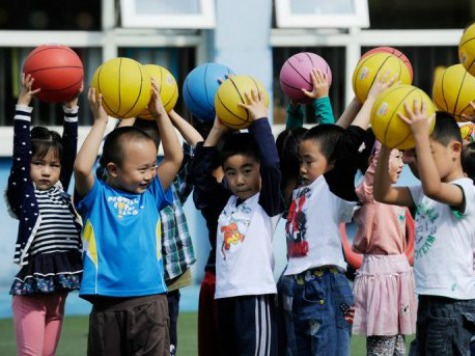China’s one-child policy, instituted in 1979, has made it the most gender-imbalanced country in the world, with 117.78 boys for every 100 girls. Since the Chinese culture traditionally favors males, massive numbers of female babies have been aborted.
While the policy is blamed for societal flaws such as a depressed “real exchange rate,” which damages the global economy, and a reduction in the labor force, perhaps the most disturbing outcome of having significantly more boys than girls is an increase in violent crimes.
Writing at the New Republic, Elizabeth Winkler reports that, in 2012, the Chinese government estimated that China had 40 million more males than females, with the difference growing larger each year.
While the country claims a reduction in the gender imbalance is a national priority, largely due to economic reasons, China, and much of the media, gloss over the fact that its one-child policy has been one of the great human rights atrocities in world history. As BBC.com reports, in 2000, for example, 90 percent of aborted babies were reportedly female.
Winkler writes that the resulting “gender imbalance” has likely led to the increase in China’s violent crimes.
In a recent study published in Asian Population Studies, economists Jane Golley and Rod Tyers determined that the higher number of males in China has led to excessive savings since families with boys are competing to match up their sons with girls, who are scarce. However, the investigators also found climbing rates of crime among unmarried males.
Projecting outward to 2030 using a global dynamic model, the researchers find “the proportion of unmatched unskilled Chinese men of reproductive age could be as high as one in four by that time.”
They write:
Policies to rebalance the sex ratio at birth will take decades to reduce the sex ratio at reproductive age and any associated allowance for higher fertility would slow growth in real per capita income. Yet our results suggest that more than offsetting gains could accrue from productivity improvements stemming from reduced crime.
The researchers tap into previous research that has determined that China’s crime rate has indeed doubled over the last two decades.
A March 2010 article in The Economist observes:
China alone stands to have as many unmarried young men–“bare branches,” as they are known–as the entire population of young men in America. In any country rootless young males spell trouble; in Asian societies, where marriage and children are the recognised routes into society, single men are almost like outlaws. Crime rates, bride trafficking, sexual violence, even female suicide rates are all rising and will rise further as the lopsided generations reach their maturity.
Additionally, George J. Gilboy and Eric Heginbotham, writing at Foreign Affairs in October 2010, noted that China’s economy has continued to grow and its per capita income increased as it has repealed taxes and invested in infrastructure and a social safety net; nonetheless, social tensions have grown more pronounced.
The authors write:
The Chinese Academy of Social Sciences (CASS) estimates that incidents of social unrest have risen from about 40,000 in 2001 to “over 90,000” in 2009. CASS also reports that these incidents are becoming larger, more violent, more likely to cross provincial borders, and more diverse in terms of participants and grievances.
A 2008 study in Social Science Research Network links the increase in crime and violent behavior in China to the scarcity of females. The research indicates that crime rates almost doubled in the nation between 1992 and 2004, the same period in which sex ratios (males to females) in the age grouping of 16-25 years, which is characterized by a tendency toward crime, rose dramatically from 1.053 to 1.093.
The study found that “a 0.01 increase in the sex ratio raised the violent and property crime rates by some 5-6%, suggesting that the increasing maleness of the young adult population may account for as much as a third of the overall rise in crime.”
As Winkler observes, anthropological studies confirm what instinctively seems true–that in cultures with excessive men, males tend to engage in risky, “wife-seeking” behavior. When the size of the pool of unmarried men is reduced and “normative monogamy” occurs more often, rates for rape, murder, assault, robbery, and fraud are all reduced.

COMMENTS
Please let us know if you're having issues with commenting.